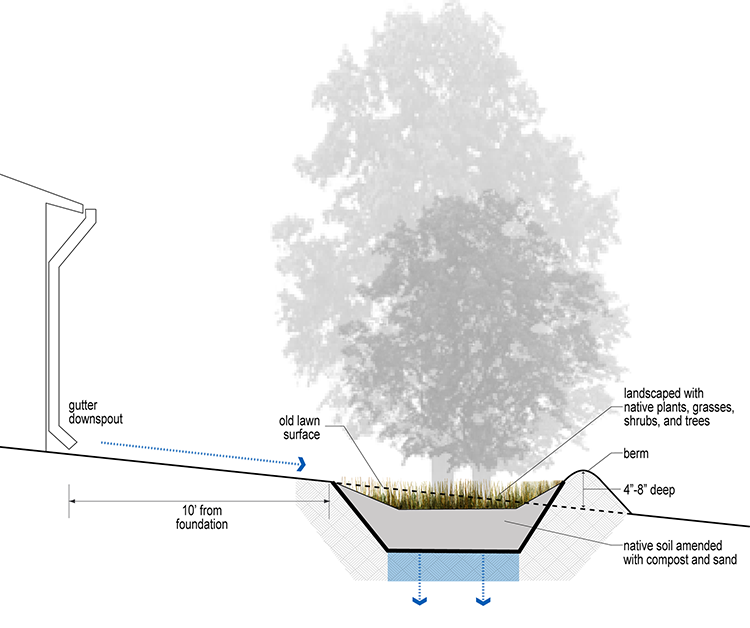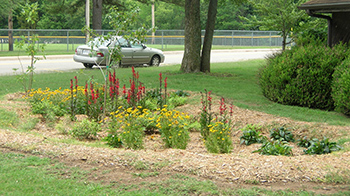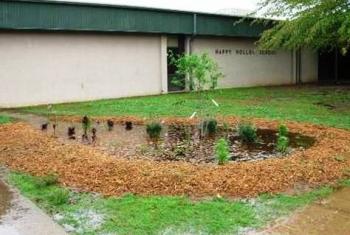Arkansas Rain Gardens
Rain gardens are landscaped depressions that collect rainfall from a roof, paved area or yard. These bowl-shaped gardens are designed to capture stormwater runoff and allow it slowly to percolate into the soil, recharging groundwater and removing stormwater pollutants.
How do rain gardens work?
The garden's flat bottom helps distribute rain water evenly across the planted area.
Topsoil amended with compost and sand allows the water to slowly soak into the ground
within a few days so there is no standing water to breed mosquitoes.
Many Arkansas residents are turning to rain gardens as a way to improve water conservation
and beautify their yards and public areas.

*Note: The rain garden should be at least 10 feet from a building to avoid foundation problems.
Illustration Courtesy of Jeff Huber at the UA Community Design Center

This rain garden collects stormwater from a park pavilion roof, allowing it to slowly soak into the ground and irrigate native plants.

During a storm, roof runoff fills a rain garden.
What benefits do rain gardens provide?
When landscaped with native plants that can thrive in both extreme wet and dry conditions, rain gardens provide many benefits including:
- Protecting local streams and lakes from urban stormwater pollutants including sediment, fertilizers, pesticides, and automotive fluids
- Increasing water infiltration and recharging groundwater supplies
- Enhancing the beauty of yards and neighborhoods through beautiful landscaped areas
- Providing habitat and food for birds, butterflies and beneficial insects
- Reducing flooding and drainage problems in communities
- Sustaining creek flows during dry weather
- Reducing the flow intensity of creeks during flood events
Downloadable Rain Garden Resources
Rain Garden Videos
Native Plants for Rain Gardens in Arkansas